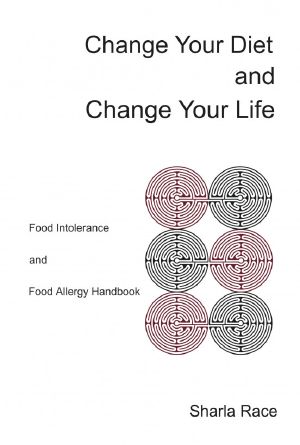Change your Diet and Change your Life

- Authors
- Race, Sharla
- Publisher
- Sharla Race
- Tags
- food allergy , food allergies , food sensitivity , food hypersensitivity , food intolerance
- ISBN
- 9781907119095
- Date
- 2012-03-15T00:00:00+00:00
- Size
- 0.28 MB
- Lang
- en
A healthy diet is only 'healthy' if it works for you and YOU are unique. Eating the wrong diet for you can lead to physical and mental problems, affect your appearance, alter your behaviour and limit your life. Changing your diet can truly change your life.
Offering no gimmicks and no promises of a quick fix, Change Your Diet and Change Your Life guides you gently through understanding the ways in which food intolerance can make you ill.
Detailed information on individual foods and food chemicals ensures this book is a comprehensive handbook of food intolerance and food allergy. Research evidence is presented covering a range of conditions including asthma, behaviour problems, dermatitis, fatigue, migraine, tinnitus, urticaria, and weight problems. The role of food chemicals (including amines, benzoates, caffeine, lectins, MSG, salicylate, and sulphites) is explained, and the difficulties that can be caused by individual foods is also outlined.
This book is unique in presenting an easy to follow seven step plan that will help you identify if food intolerance is at the root of your health problems.
[This book is available in paperback with the title: The Food Intolerance Handbook. The contents are the same.]
Contents
Welcome
1 You Are Unique:
Biochemical individuality
The myth of the healthy diet
If food was my problem surely I'd know, wouldn't I?
Proven by many, not accepted by the majority.
Why you need to involve your doctor
2 Food Can Make You Ill
Symptoms
Physical problems
Mind, emotions and behaviour
Just living...
Not all illness is food related but ...
Evidence:, Acute Pancreatitis, Anorexia Nervosa, Arthritis, Asthma, Attention Deficit Hyperactivity Disorder, Autism, Behaviour, Breast Pain, Chronic Fatigue Syndrome, Coeliac Disease, Colic and Colitis, Crohn's Disease, Dermatitis Herpetiformis, Eczema (and Dermatitis), Epilepsy, Fatigue, Gallbladder Disease, Gastrointestinal Problems, Glaucoma, Head and Neck Pain, Hemiplegia, Hypoglycaemia, Irritable Bowel Syndrome (IBS), Joint Pain, Mekersson-Rosenthal Syndrome, Memory Loss, Meniere's Disease, Migraine, Mouth Ulcers (Aphthous Ulcers), Movement Disorders, Multiple Sclerosis, Nephrotic Syndrome, Oral Allergy Syndrome, Pre Menstrual Syndrome, Psoriasis, Recurrent Otitis Media, Restless Legs Syndrome, Rhinitis, Sexual Dysfunction, Sinusitis, Sleep Disorders, Tinnitus, Urticaria, Vasculitis, Vertigo.
3 Food Intolerance and Food Allergy
Testing Methods
The Seven Step Plan
Step 1: Decide to take some action
Step 2: Simplify your diet
Step 3: Know what you are eating.
Step 4: Develop a strategy
Step 5: Eliminate suspect foods
Step 6: Test suspect foods
Step 7: Review
4 Food Chemicals
Amines
Foods high in amines
Benzoates
Caffeine
Capsaicin
Gluten
Histamine
Lectins
MSG
Oxalic acid
Phenylethylamine
Purines
Salicylates
Saponins
Serotonin
Solanine
Sulphur and sulphites
Tannins
Tyramine
Other chemicals: Aflatoxin, Carvone, Glycyrrihizic Acid, Goitrogens, Hymenoptera insects, Linamarin, Moulds, Myristicin, Nickel, Nitrates, Phenols, Propionates, Tin.
5 Individual Foods
Chocolate
Corn
Eggs
Fish
Fruit
Grains: Rice, Barley, Oats , Rye, Buckwheat.
Herbs and spices
Legumes
Margarine.
Meat and poultry
Milk
Peanut
Seeds and nuts
Soya
Sugars and sweeteners
Vegetables
Wheat
6 The Next Stage
Tips and tricks
Final Word
Appendix 1: Food Additives
Resources
References